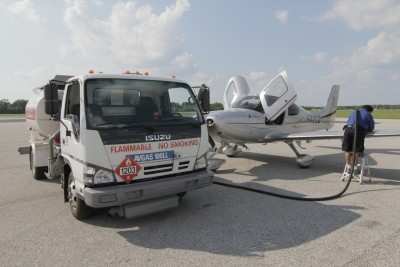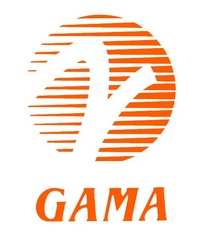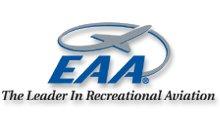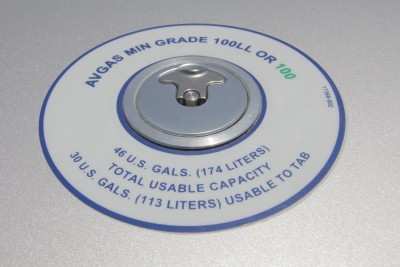Final Product "Must" Be A Drop-In Replacement For 100LL
By Tom Patton, ANN News Editor
 A lot of pilots remember when 100
octane avgas was just that. Lead in fuel was little more than
something we knew about, but as long as the engine ran, there
wasn't much more to think about.
A lot of pilots remember when 100
octane avgas was just that. Lead in fuel was little more than
something we knew about, but as long as the engine ran, there
wasn't much more to think about.
But when the push to unleaded fuel for cars began back in the
1970's, we all started hearing about, and eventually using 100LL
avgas. The amount of lead was reduced in an effort to lower the
amount of airborne lead pollution in the air. The 100LL transition
went fairly smoothly, and the reduced amount of lead seemed to make
little difference to the Lycomings and Continentals powering the
majority of the GA fleet.
Now, with more stringent clean air mandates, the next transition
is upon us, and a consortium of industry groups is working towards
making the switch to a completely unleaded aviation fuel as
transparent as the change to 100LL. But at the moment, there is no
clear path to an unleaded aviation fuel that does not extract a
significant penalty in engine performance.

In an online media briefing called by the Industry Avgas
Coalition, the members said that the path to a solution on the
issue is one that ensures continued availability of 100LL until a
replacement solution is implemented that minimizes potential
impacts of EPA actions upon GA. They call for a government/industry
program for the development of an unleaded avgas, FAA leadership to
ensure safety and establish appropriate airworthiness and lead
emissions standards, and a provision for the long-term viability
and safety of GA. The FAST (Future Avgas Strategy and Transition)
Plan has been designed to identify the most viable unleaded
solution possible to replace 100LL, and establish a transition
timeline which addresses aviation safety, technical feasibility and
impact upon the GA and avgas industries.

The coalition is made up of the GA advocacy groups EAA, NBAA,
and AOPA, along with GAMA and NATA, and avgas production
representative organizations API (American Petroleum Institute) and
NPRA (National Petrochemical & Refiners Association). After
testing more than 200 unleaded fuel blends, and full-scale engine
tests on 45 high-octane unleaded blends, the Coordinating Research
Council (CRC) unleaded avgas group, a collaborative research and
testing effort among fuel producers, GA manufacturers, FAA, AOPA
and EAA, concluded that there is no direct drop-in replacement for
100LL fuel. While the performance drops will be most significant in
high-performance and turbocharged engines which make up only about
30 percent of the fleet, those users consume about 70 percent of
the avgas used in the country each year, so a direct replacement
that requires no engine modifications is critical.

The matter is compounded by the fact that avgas accounts for
only 0.1% of all transportation fuel. It is very much a niche
market that requires long term storage. Neither airports or
refiners have the infrastructure to operate a "dual fuel"
transition as happened when cars went from leaded to unleaded
gas.

States are required by the EPA to meet National Ambient Air
Quality Standards (NAAQS) for Lead of 150 ng/m3 by 2017. This takes
into account all forms of lead pollution, but it could mean that
piston engine aircraft operations could be restricted in densely
populated areas, and would require a significant effort on the part
of the GA community to sway public/political support to maintain GA
airports.
The coalition, and in fact the GA community at large,
understands that lead is harmful to humans. So taking part in the
effort to resolve this issue is certainly important to those who
fly. And the coalition agrees that the day of reckoning is coming,
with only one supplier of the tetra-ethyl-lead (TEL) additive and a
decreasing demand for leaded auto fuel.

The concerns go beyond engine performance. Safety must be
considered as well. EAA's Doug McNair said that the FAA certifies
engines with a specific fuel, and that high performance
engines/aircraft require 100 octane fuel for detonation
(“knock”) protection. But the 100LL ASTM D-910 standard
includes many performance requirements necessary for safety,
including octane, vapor pressure, distillation curve (cold/hot and
high altitude operations as well as starting ability), freeze
point, water separation, and long-term stability.
Walter Desrosier, Vice President Engineering & Maintenance,
GAMA, said the effort will have to be driven by the FAA. He said
that it will require FAA support in everything form R&D to
certification, and that the approval/certification range to change
the standards for every engine is unprecedented for FAA.

The coalition has resolved that GA industry stakeholders should
work proactively to recommend that EPA and FAA promulgate
regulations to reduce lead emissions from GA aircraft along a
transition timeline which balances environmental benefit with
aviation safety, technical feasibility and impact upon the GA
industry. The goals should be to:
- Establish a process to develop the most viable unleaded
solution to replace 100LL.
- Incentivize development of high-octane unleaded avgas.
- Recommend defined dates for transition to unleaded fuel.
- Minimize impact of EPA NAAQS for lead and endangerment finding
under the Clean Air Act.
They see a short term transition period in which the CRC
research report, due September 2010, determines how much reduction
in maximum TEL content is possible to make an interim, lower-lead
fuel completely drop-in ... no actions needed by operators ... with
the introduction of a lower-lead content 100LL Fuel by 2015. They
look for EPA and FAA regulation to mandate introduction of
lower-lead fuel.

In the longer term, the coalition says that a public/private
partnership should be established to develop the most viable
unleaded solution to replace 100LL avgas and appropriate
airworthiness and emissions regulatory standards; that FAA must
take a leadership role in the integrated avgas program; that
criteria for development of viable unleaded avgas specification be
identified; and that unleaded avgas be developed with the support
of that partnership.
The comment period on the EPA's ANPR on lead emissions from GA
aircraft published April 28, 2010 has been extended until August
27th. AOPA's Rob Hackman said the coalition group met with the FAA
Wednesday, and they are working to evaluate the avenues to get a
safe product into aircraft. The FAA is looking at all certification
avenues including STC, balancing safety with process. Doug McNair
said that the coalition is not in the business of picking winners
and losers in the fuel replacement game, but that assuring that
there is a level playing field so that everyone with a possible
solution is evaluated in the same way. Good data is critical to the
process, he said.

The coalition believes that the 91/94UL scenario is worst case.
94UL is simply 100LL without the lead additive, which is what
boosts the octane rating 6 points. While it is "drop-in" for
70 percent of the fleet, it is unworkable for that 30% of
high-performance airplanes that consume 70% of the fuel. Meanwhile,
you can be sure that there will be plenty of discussion on this
topic at Airventure next month, and indeed in the months and years
to come.
 Aero-News: Quote of the Day (04.28.25)
Aero-News: Quote of the Day (04.28.25) ANN's Daily Aero-Term (04.28.25): Decision Altitude (DA)
ANN's Daily Aero-Term (04.28.25): Decision Altitude (DA) ANN's Daily Aero-Linx (04.28.25)
ANN's Daily Aero-Linx (04.28.25) Airborne-Flight Training 04.24.25: GA Refocused, Seminole/Epic, WestJet v TFWP
Airborne-Flight Training 04.24.25: GA Refocused, Seminole/Epic, WestJet v TFWP Aero-News: Quote of the Day (04.29.25)
Aero-News: Quote of the Day (04.29.25)











